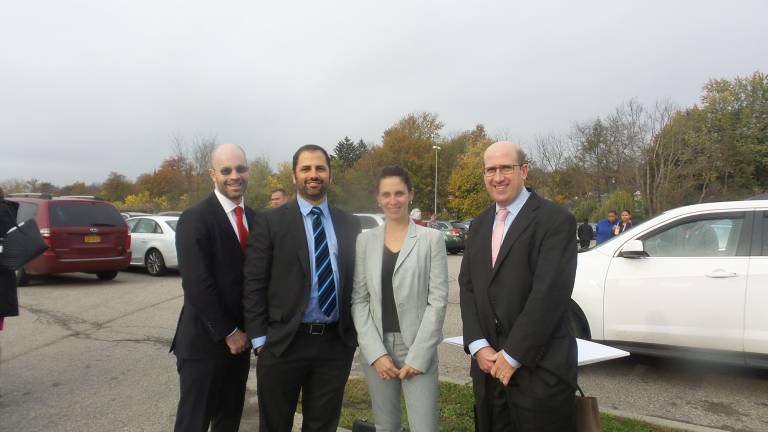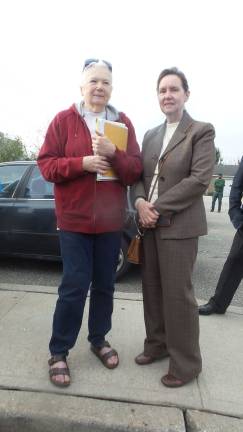Bad acoustics frustrate both sides in BT trial


By Frances Ruth Harris
GOSHEN — First there was the fire alarm that emptied out the courthouse. And then there were those very bad, no good, just plain terrible acoustics.
Both sides in BT Holdings v. Village of Chester, which is bringing to a head a years-long struggle between the developer of a proposed townhouse complex and its opponents, were frustrated by not being able to hear one another in the courtroom last Friday.
Judge Tom Walsh said it had the worst acoustics of any courtroom he'd ever been in.
The jury — four men and four women — alternated between quizzical expressions, as they struggled to hear, and blank, bored looks. One juror raised his hand to say he could not hear.
The judge did try to make sure all microphones were working and turned up.
Kelly Pressler, representing BT Holdings, sometimes failed to speak into the microphone. Her voice was swallowed up in the acoustical abyss.
In the hallway, on the way out to lunch, someone suggested that a mistrial would be warranted, since the lawyers and the judge couldn't be heard. The court's transcriber often had to stop attorneys and ask them to repeat what they'd just said.
Adding to the air of disruption, the jury was asked to leave several times during each session, to allow the prosecution and the defense to settle disputes over what documents to allow among thousands of pages generated over ten years and two mayors.
PromisesBT's principal, Frank Nussbaum, seeks damages from the Village of Chester for the time and resources he wasted in pursuing a project the village ultimately blocked. The village is willing to let the project develop with less density, but Nussbaum isn't interested. He said the village promised to permit a bigger project.
The village, through its attorneys, says it made no promises, and that the land is now zoned as the village — and not Nussbaum — wants it zoned.
The village says Nussbaum threatened the village in a full-page newspaper ad in The Chronicle. The village board is a different one than the board that agreed to the greater-density project, in part over the public's opposition to BT.
On the witness stand, Nussbaum said he was just trying to help citizens understand that promises were made and not being kept. He sat with his legal team when he wasn't on the stand.
Much time was taken to escort the jury out of the courtroom each time an interpretation was required.
The judge was impressed with faster progress in the afternoon, when each discussion did not actually require multitudinous interpretations.